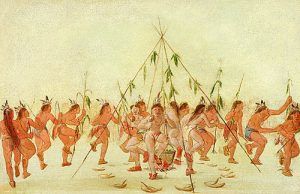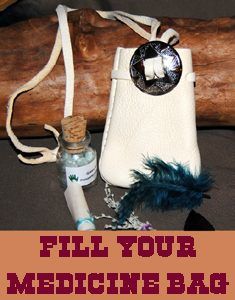By Katharine Berry Judson in 1913

Strawberries
Origin of Strawberries
When the world was new, there was one man and one woman. They were happy; then they quarreled. At last, the woman left the man and began to walk away toward the Sunland, the Eastland. The man followed. He felt sorry, but the woman walked straight on. She did not look back.
Then Sun, the great Apportioner, was sorry for the man. He said, “Are you still angry with your wife?”
The man said, “No.”
Sun said, “Would you like to have her come back to you?”
“Yes,” said the man.
So Sun made a great patch of huckleberries which he placed in front of the woman’s trail. She passed them without paying any attention to them. Then Sun made a clump of blackberry bushes and put those in front of her trail. The woman walked on. Then Sun created beautiful service-berry bushes which stood beside the trail. Still, the woman walked on.
So Sun made other fruits and berries. But the woman did not look at them.
Then Sun created a patch of beautiful ripe strawberries. They were the first strawberries. When the woman saw those, she stopped to gather a few. As she gathered them, she turned her face toward the west. Then she remembered the man. She turned to the Sunland but could not go on. She could not go any further.
Then the woman picked some strawberries and returned to her trail, away from the Sunland. So her husband met her, and they went back together.
How the Pheasant Beat Corn
Once Pheasant saw a woman beating corn in a wooden mortar in front of her lodge.
“I can do that, too,” said Pheasant.
“I don’t believe you,” said the woman.
“Yes, I can,” said Pheasant. So Pheasant went into the woods behind the lodge. He flew to a hollow log and drummed with his wings until the people thought he really was beating corn.
That is why the Indians have the Pheasant Dance as a part of the Green-corn dance.
Why the Turkey Gobbles
In the old days, Grouse had a good voice, and Turkey had none. Therefore Turkey asked Grouse to teach him. But Grouse wanted to pay, so Turkey promised to give him some feathers for a collar. That is how the Grouse got his collar of turkey feathers.
So the Grouse began to teach Turkey. At last, Grouse said, “Now you must try your voice. You must halloo.”
Turkey said, “Yes.”
Grouse said, “I’ll stand on this hollow log, and when I tap on it, you must halloo as loudly as you can.”
So Grouse climbed upon a log, ready to tap on it, but when he did so, Turkey became so excited that when he opened his mouth, he only said, “Gobble, gobble, gobble.”
That is why Turkey gobbles whenever he hears a noise.
The Eagle’s Revenge
Once, a mountain hunter heard a noise at night like a rushing wind. He went outside his tepee and found an eagle sitting on the drying pole, feasting at the deer he had shot. So he shot the eagle.
The next morning the hunter took the deer back to the village. He told how he had shot the deer and then the eagle. Therefore the chief sent out men to bring in the eagle and have an Eagle dance.
That night when they were dancing, there was a whoop outside. A strange warrior walked into the circle. He was not of that village. They thought he had come from one of the other Cherokee villages.
This warrior told how he had killed a man. At the end of the story, he yelled, “Hi!” One of the men with rattles, who was leading the dance, fell dead. The stranger sang of another deed. In the end, he yelled, “Hi!” Another rattler fell dead. The people were frightened. But the stranger sang of another great deed. Then again, he yelled, “Hi!” Again a man with the rattles fell dead. So all seven men who had rattles and were leading the dance fell dead. And the people were too frightened to leave the lodge where they were dancing.
Then the stranger vanished into the darkness. Long after, they learned that the stranger was the brother of the eagle that had been killed.
Compiled and edited by Kathy Alexander/Legends of America, updated March 2023.
About the Author: Excerpted from the book Myths and Legends of the Great Plains, by Katharine Berry Judson, 1913. Katharine Berry Judson published several books on the myths and legends of the Native Americans in the early part of the 20th Century. Judson was a professor of history at the University of Washington.
Return to Cherokee Myths & Legends
Also See:
Legends, Myths & Tales of Native Americans


